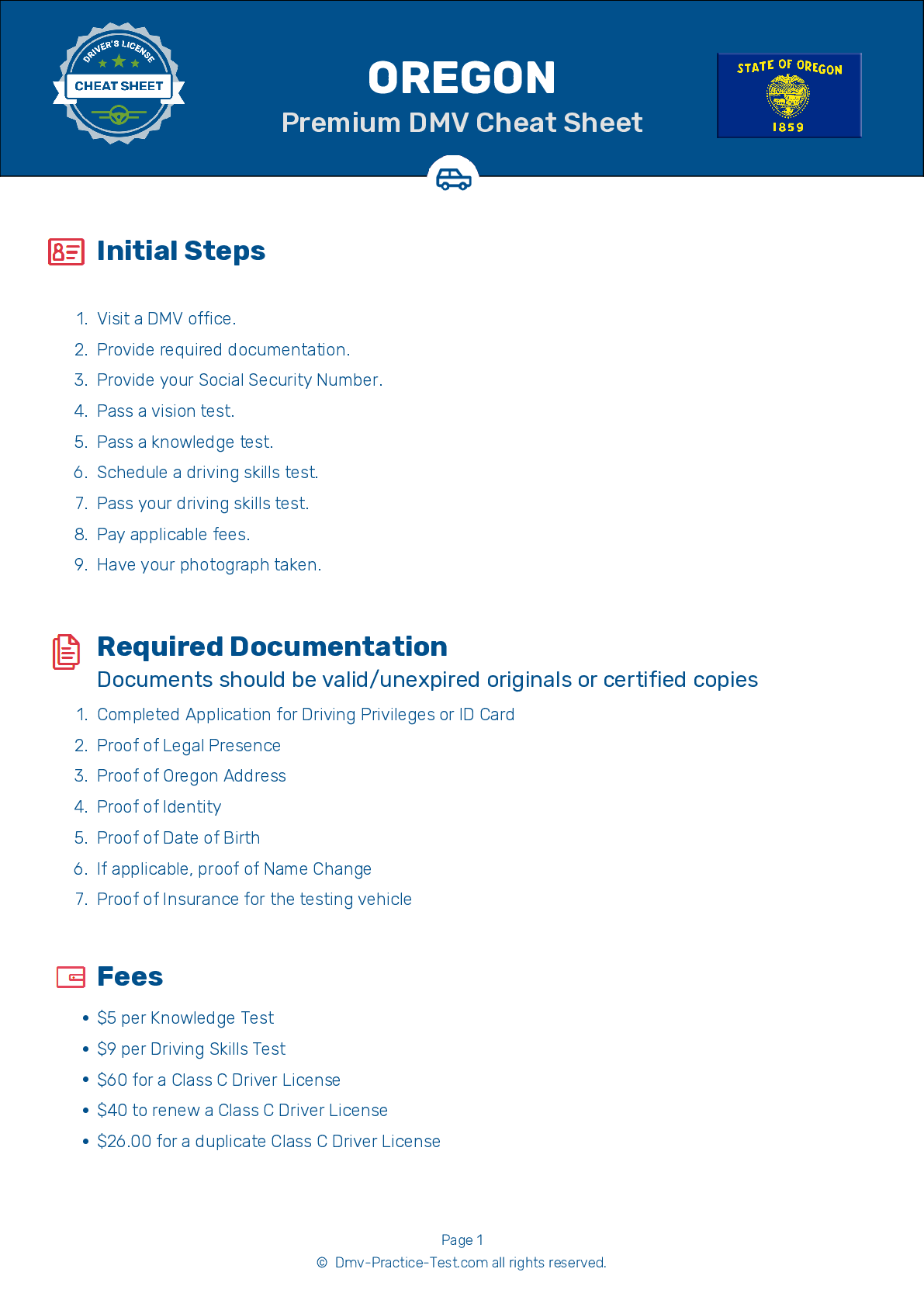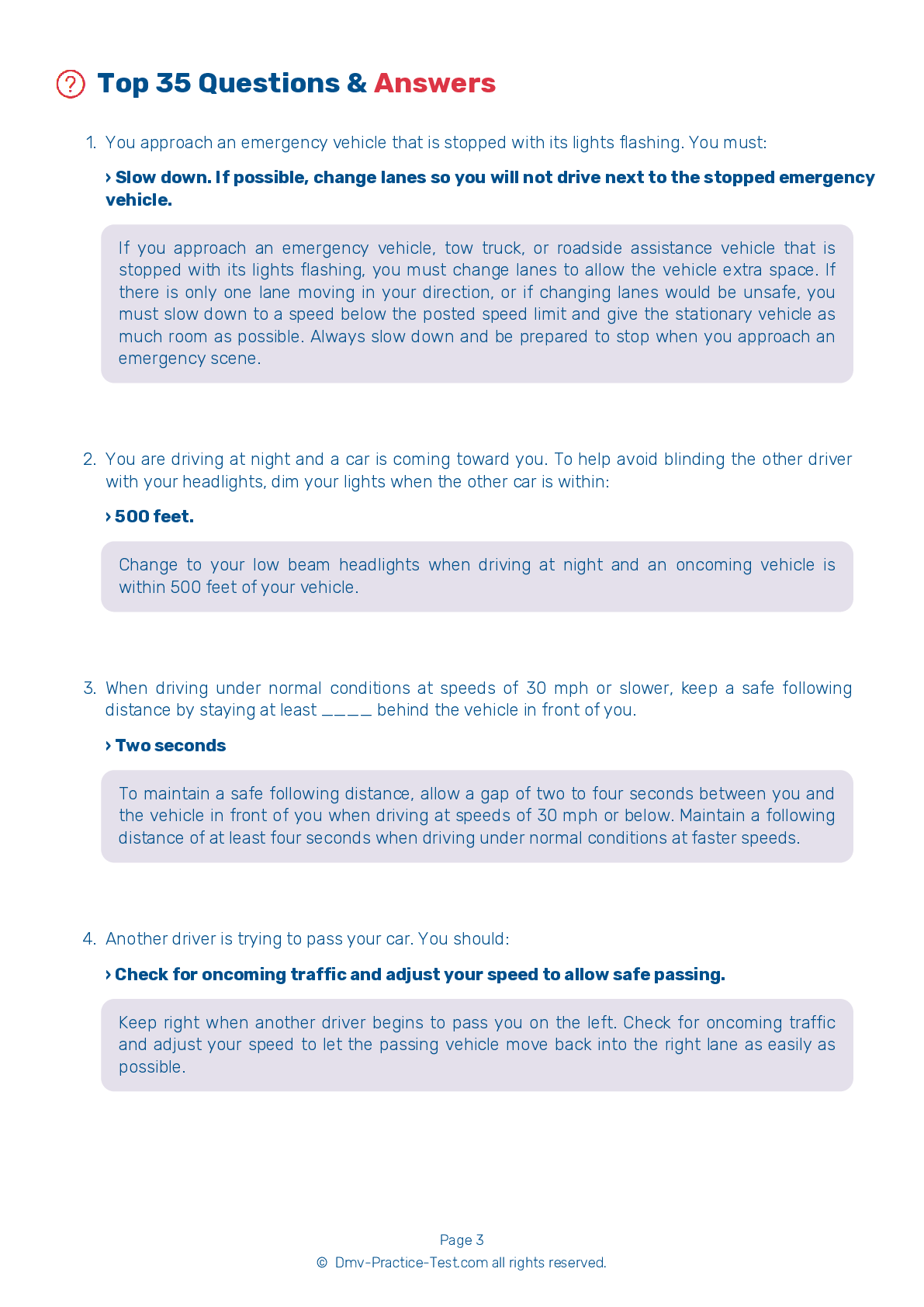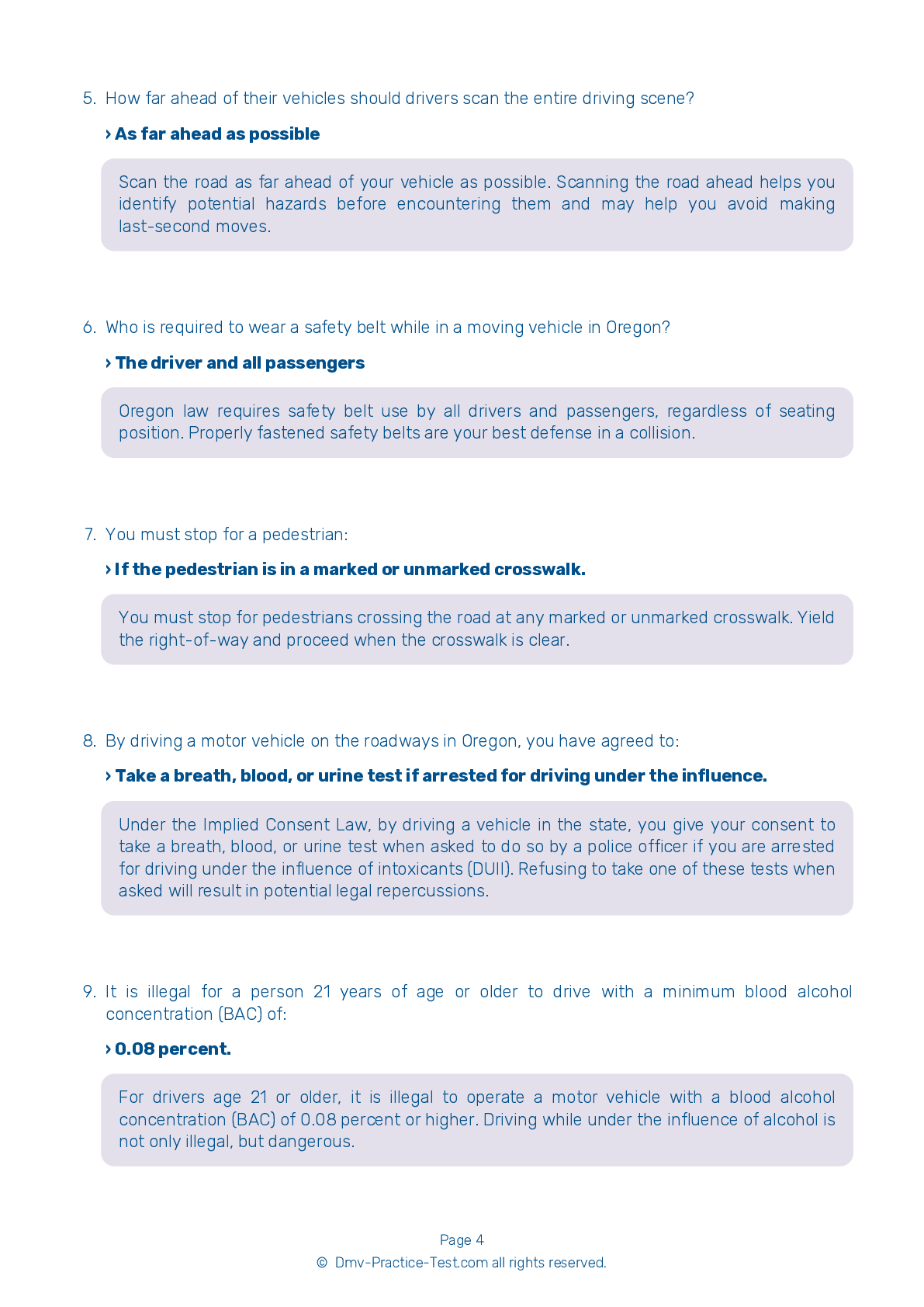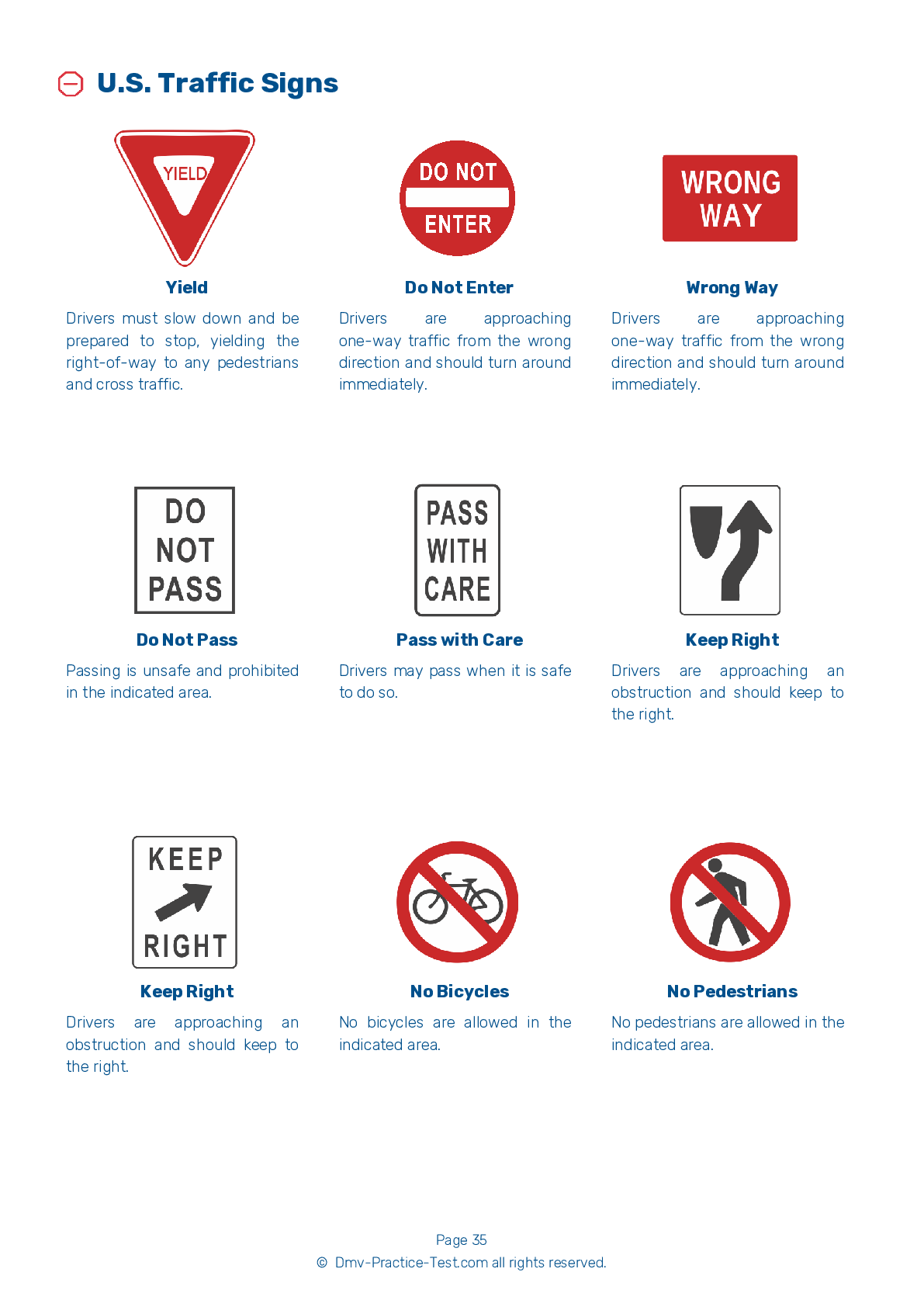FREE Oregon DMV Practice Test #6 Page 3 of 5
The practise exams for the Oregon DMV have been updated for January 2025. It includes questions based on the most important traffic signals and regulations for 2025 from the Oregon Driver Handbook. To study for the DMV driving permit test and driver's licence exam, use actual questions that are very similar (often identical!) to the DMV driving permit test and driver's licence exam.
Each question on the practise exam has a tip and explanation to help you recall the ideas. Questions about traffic rules, traffic signs, and driving statutes, as well as knowledge from the Driver Handbook, will be included in the written portion of the official Oregon DMV test.
You must properly answer 28 of the 35 questions to receive a passing mark. Use the Oregon Department of Motor Vehicles' practise exam to help you prepare for your instruction permit or driver's licence.
The DMV exam is offered in a variety of languages.
Using any form of testing help will result in an automatic fail, and the DMV may take further action against your driver's licence, so avoid it.
15 . This road sign means:

This sign indicates that the overpass ahead has a low clearance. You should not proceed if your vehicle is taller than the height shown on the sign (in this case, 13 feet 6 inches).
16 . You are coming to a railroad crossing where the crossing signals are flashing. You should:
When approaching a railroad crossing, you must stop your vehicle no closer than 15 feet from the nearest rail if an installed electric or mechanical signal is giving warning of an approaching train. Be aware of other warning signs that may indicate an oncoming train, including seeing a lowered crossing gate or hearing an oncoming train.
17 . You may pass another vehicle if the line dividing your lane from the lane you wish to enter is a ____ line.
White lines separate traffic lanes traveling in the same direction. You may cross broken white lines to pass, as long as the passing lane is clear.
18 . The effect that alcohol has on your reflexes and judgment:
Consuming any type of alcohol can have negative effects on your reflexes and judgment. It does not matter which type of alcohol is consumed, only how much alcohol has entered a person's bloodstream.
19 . You may legally turn left onto a one-way street when stopped at a solid red light:
At a solid red light, you may generally turn left or right from a two-way road onto a one-way road after stopping and yielding to all traffic and pedestrians. Watch for signs prohibiting turns on red.
20 . This road sign means:
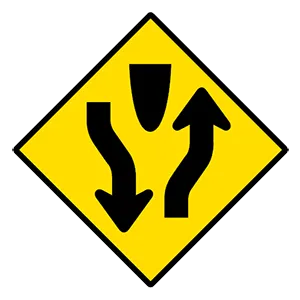
This sign indicates that a divided highway begins ahead. The road will split into two one-way roadways separated by a median or divider. You must keep to the right.
21 . The driver's left arm and hand are extended upward. This hand signal means that the driver plans to:

